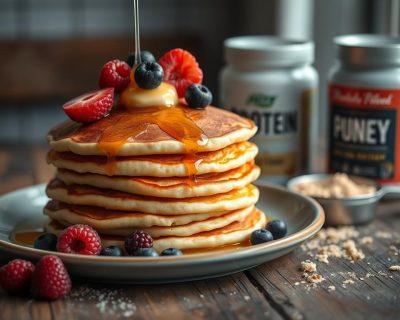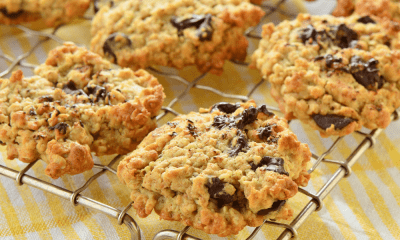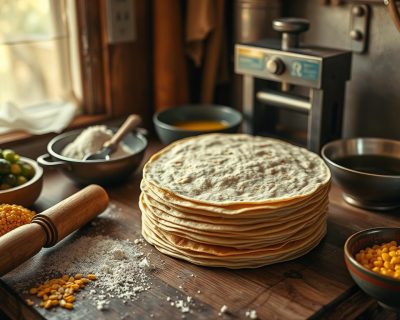Sourdough Discard & Sourdough Starter | 100% Discard! {from Pantry Mama}
Transform your sourdough discard into delicious treats! Discover a variety of easy sourdough discard recipes, from muffins to pancakes, that make the most of your starter.

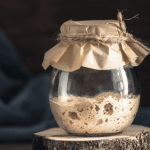
Sourdough Discard Recipes & Tips: Make the Most of Your Jar of Sourdough
I remember the day I stared at my jar of sourdough starter with excitement, only to realize I had a lot of discard each time I refreshed my culture—often removing 100g of dough at a time. “ I’m confused —am I really throwing away all this dough?” I asked myself. That dough stayed left in the jar, clearly unfed and definitely not recently fed, sometimes smelling like acetone.
Over time, I discovered it was sourdough discard, and that it could lead to delicious sourdough discard recipes rather than end up wasted. I wanted to make sourdough bread, but I also yearned for a good discard recipe to use all that extra dough. Eventually, I learned this starter that is removed can enrich everything from pancakes to muffins. Today, I’ll share my tips so you can explore your own sourdough journey—whether you’re new to sourdough or simply looking to reduce waste.
[ingredientes_receta]If you need something sweet alongside your baking projects, I recommend Chocolate-Covered Strawberries or Smoothie Recipes. Both pair wonderfully with any leftover sourdough items you whip up.

What is Sourdough Discard and How is it Different from Sourdough Starter?
Each time you feed your sourdough starter, you add fresh flour and water, then remove a portion of your sourdough starter. That starter that is removed is known as sourdough discard. It’s different from sourdough that’s fully active, because it’s usually unfed and won’t reliably create a full dough rise. Even so, it still carries yeast and bacteria and provides a tangy sourdough flavor. If you keep an active sourdough starter ready for baking, the leftover dough is your sourdough discard—less potent but ready to use in recipes that don’t depend on robust leavening. Think of it as a helpful add-on that can bring complexity to muffins, pancakes, and more.
Understanding the Relationship Between Discard and Starter
Your main culture depends on frequent feeding, whether on the counter or as a starter in the fridge. You feed your active starter with fresh flour and water to make making sourdough bread feasible, but that creates a lot of discard if you keep a large culture. The remaining starter thrives, while the discard instead offers you a chance to bake smaller treats.
Because discard isn’t as bubbly or recently fed, it’s not as strong for leavening. Yet it contains natural yeast and can still affect flavor, especially in simpler bakes. Rather than throwing away valuable dough, you can integrate it into new dishes. This leftover portion might be stored as sourdough discard in the fridge, or you could keep discard in the freezer if you have much sourdough discard at once.
How Much Sourdough Discard Do You Typically Generate?
Some people keep 100g, others hold more. The amount of discard depends on how big your culture is and how often you need to feed it. If you bake every day, you’ll likely use sourdough discard often. But if you only bake weekly, you might gather too much sourdough discard quickly. You can solve that by placing leftover dough in the fridge or the freezer. That leftover portion will still be ready to make a variety of baked treats or simpler breads. If you ever worry about throwing away dough, just remember to chill or freeze it until you spot a great recipe that fits your schedule.
Why You Shouldn’t Discard Your Sourdough Starter
Your main culture is essential for making sourdough bread, so please don’t ever discard your starter fully. If you toss it, you lose all that progress. Instead, keep the starter healthy for serious bread making, and use sourdough discard as a bonus for tangy enhancements. You might prefer to use the discard for a sourdough discard sandwich or a quick muffin. This approach respects the remaining starter (which stays robust) and channels the leftover portion into fresh creations. Discard is just different from sourdough that’s actively rising dough, but it still boosts flavor when combined with a little baking soda, baking powder, or even commercial yeast if you want extra leaven.
How to Use Sourdough Discard Instead of Throwing It Away?
If you’ve been throwing away leftover dough, it’s time to use sourdough discard in simpler methods. You can add your sourdough discard to batters that don’t rely on full fermentation. For instance, if you have excess starter, fold it into pancake or waffle mixes. You might also combine it with a savory batter for fritters or onion rings. A small pinch of baking powder helps ensure a light texture. By doing this, you turn the discard instead of tossing it, saving both money and resources.
Delicious Ideas to Give Your Discard a Second Life
A classic sourdough discard recipe could be crackers or flatbreads. A friend of mine swears by discard-based focaccia. Or you might prefer a sweet twist, blending a cup of discard into banana or pumpkin bread. If you want a new take on tortillas, consider mixing some leftover dough into Corn Tortilla. I once tried a pancake formula that tasted delicious—just a small measure of leftover dough made a difference. There are endless ways to use leftover sourdough, from pastries to spreads.
Best Practices for Storing Sourdough Discard in the Fridge
When you’re not ready to bake straight away, keep your sourdough discard in the fridge. Let it sit in a sealed container, perhaps labeled with the date. If you see liquid on top (known as hooch), stir it back in or pour it off. This leftover dough can remain stable for days. When you want a discard recipe, scoop out what you need. If it ever smells like acetone or turns grimy, you can compost it. But usually, sourdough discard stays usable for a while.

Freezing Your Sourdough Discard for Later Use
Sometimes you have much sourdough discard—far more than you can handle immediately. That’s when discard in the freezer comes in handy. Label your container, pop it into the freezer, and thaw it at room temperature when you want to bake. Once thawed, it’s ready to make pancakes, biscuits, or even a partial loaf if you add an active starter or commercial yeast. This method saves you from throwing away perfectly good dough.
What Are Some Easy Sourdough Discard Recipes?
If you’re new to sourdough or just short on time, sourdough discard can yield quick wins:
- Biscuits or scones (use baking soda or baking powder for leaven)
- Pancakes or waffles (blend leftover dough with using all purpose flour and eggs)
- Crackers (thin dough, minimal rise required)
- Banana or muffin batters (stir in your leftover sourdough for tang)
If you want a nutritional spin, check out Protein Pancakes or pair your tangy crackers with Sugar-Free Ice Cream for a balanced treat.
Making Fluffy Pancakes from Extra Dough
One of my favorite go-to moves is whipping up a simple pancake batter. I mix flour, milk, eggs, a dash of baking soda, and a spoonful of leftover dough (100g). “They taste like sourdough but cook up quickly,” my sister once remarked. If I really want extra lift, I might add commercial yeast, though it’s optional. The wild yeast in the discard (100g) can give a mild tang, but the pancake still benefits from an additional leaven.
How to Bake with Sourdough Discard Banana Bread
Banana bread and discard (100g) are an amazing match. You can let the dough sit briefly to ferment, then rely on basic quick-bread techniques. If you want a significant dough rise, blend in a bit of active starter or a leavening agent. The leftover sour notes merge with banana sweetness, creating a loaf of bread that’s somewhat different from sourdough in structure but still has that tangy backnote. It’s a great recipe for using leftover dough (100g) to elevate a family favorite.
Creating Flavorful Muffins Using Your Sourdough Discard
If you prefer a muffin approach, fold discard (100g) into your wet ingredients, toss in blueberry or nuts, and rely on baking powder. Since discard (100g) is typically unfed, it won’t carry a big punch on its own, but the mild tang is delicious. Adjust the amount of flour if the batter’s too loose. In 20 minutes or so, you’ll have fresh muffins that might remind you of a flavorful sourdough bread—just lighter and sweeter.
Can You Make Sourdough Bread with Discard?
Yes, but it’s different from sourdough raised by a fully active starter. Discard (100g) isn’t as bubbly or potent, so you’ll likely add commercial yeast or partial active starter to ensure your bread dough can dough rise. Some bakers think of it as a hybrid approach: part natural yeast from the leftover dough (100g), part robust leaven. That creates a mild sour tang without the longer timeline. Whether you do it alone or combine it with strong culture, you can produce a loaf that tastes comforting and not too sharp.
Transforming Your Discard into a Sourdough Loaf
When you make bread with leftover dough (100g), combine the discard (100g) with enough fresh flour and water, plus extra leaven if needed. Let it rest, checking if it puffs. If not, a pinch of yeast or more active starter can step in. This approach keeps you from discarding your starter, using the leftover portion (100g) for a partial ferment. You might not get a big loaf of bread like with a fully active culture, but it still yields a sliceable, tasty outcome.
Difference in Flavor: Sourdough Bread Made with Discard vs. Active Starter
A purely active sourdough starter tends to produce deeper complexity because it’s recently fed and extremely alive. A discard-based loaf (100g) relies on leftover dough (100g) that might be unfed, producing a gentler sour note. Both have their charm—some days you want a full, punchy sourdough flavor, others you want a milder bread that’s ready faster. Think of it as vs sourdough with a robust profile versus a simpler, leftover-driven version.

Tips for Using Discard in Traditional Sourdough Bread Recipes
- Let it come to room warmth if it’s been chilled
- Replace a portion of the starter with discard for extra tang
- Keep an eye on hydration; if the discard is watery, adjust amount of flour
- If you want a strong dough rise, boost it with a fully active starter or a bit of commercial yeast
Reading about other bakers’ journeys is often inspiring. Did you find a unique way to feed your starter in the fridge less often, or use leftover dough for dumplings? Maybe you discovered a pantry mama trick that helped you with excess starter. Feel free to swap stories. You might inspire someone else who says, “I’m dealing with too much sourdough discard. What now?”
What is Your Favorite Sourdough Discard Recipe?
Maybe you tried a sourdough discard recipe for brownies, or tested a partial sourdough approach in cookies, and it tasted delicious. Or perhaps you used a cup of discard in a marinade. If you found a brilliant dish that merges leftover dough with everyday ingredients, share it. I once mixed leftover dough with leftover veggies for a savory pancake, and it turned out surprisingly well.
How Do You Feed Your Sourdough Starter?
I typically maintain around 100g of culture, adding the amount of food (equal parts flour and water) on a regular schedule. That means every refresh yields a leftover portion—the starter that is removed—which is my sourdough discard. If I don’t plan to bake soon, I stick it in the fridge. If I have too big a surplus, I freeze or compost older dough. This routine keeps my starter healthy without forcing me to waste dough repeatedly.
Share Your Sourdough Journey with Us!
Are you new to sourdough, or did you start long ago? We all find our stride differently. Perhaps you tested a leftover dough to make bread with partial success or discovered that sourdough discard serves as a thickener for soups. Whether you prefer rye or standard using all purpose flour, your journey is unique. I enjoy hearing how others handle that extra dough. Sometimes, reading a single tip can open up a world of ways to use leftover sourdough.
What to Do with Leftover Sourdough Discard?
When you see leftover dough left in the jar, it’s natural to wonder if you must discard your starter. Instead, try these options:
- Freeze or chill if you can’t bake immediately
- Whip up a quick flatbread or cracker dough
- Compost it only if it’s too far gone
A single weekend might be perfect for a discard marathon, where you churn out waffles for breakfast and a tangy sauce for dinner. The main goal is reducing food waste while savoring that subtle sourdough flavor.
Composting Your Sourdough Discard: Eco-Friendly Tips
If your dough is genuinely past its prime—maybe it reeks or has mold—compost your discard. Mixing it with organic scraps ensures it breaks down, instead of throwing it in the trash. This eco-friendly step is especially handy if you have a lot of discard that’s been neglected. But if the dough still smells okay, consider a discard recipe first. Compost is a last resort for truly unfit dough.
Creative Uses for Sourdough Discard Beyond Baking
Sourdough discard might shine as a binder for veggie burgers or a slight ferment in salad dressings. You could stir it into soup for extra body or craft onion ring batter. If you’re feeling adventurous, swirl it into stew or marinade for a tangy note. Sometimes, leftover dough can replace eggs or bind crumbs in meatloaf. Don’t limit yourself to bread or muffins—excess starter can go in all sorts of dishes.
Combining flavors
How to Repurpose Discard into Delicious Dishes
A bit of leftover dough can create a partial rise in tortillas, or you can combine it with a small measure of commercial yeast for quick dinner rolls. If you want dessert, consider pairing your baked creation with Sugar-Free Ice Cream or warming up some Protein Cookies. Since discard is ready to make a difference at any moment, you just need to decide what appeals to you that day.
Key Takeaways
- Sourdough discard forms each time you feed your sourdough starter, removing leftover dough
- Rather than throwing away that portion, store sourdough discard in the fridge or freezer for simpler recipes
- Discard is unfed, making it different from sourdough that’s fully active, but it still has yeast and bacteria for mild tang
- Whether you do banana bread, a pancake mix, or partial bread dough, leftover dough can liven up your kitchen
- You can compost your discard if it’s gone stale, but it often remains ready to make new dishes.
Frequently Asked Questions (FAQs) – Sourdough Discard Recipes
❓ What are the best sourdough discard recipes?
The best sourdough discard recipes include pancakes, waffles, focaccia, biscuits, crackers, and pizza dough. These recipes turn leftover starter into delicious baked goods.
❓ How to make quick sourdough discard recipes?
Quick sourdough discard recipes include pancakes, waffles, and crackers. They require minimal ingredients and can be made in under 30 minutes.
❓ What can I make for breakfast with sourdough discard?
Sourdough discard is perfect for breakfast dishes like pancakes, waffles, biscuits, and even tortillas. These recipes add a slight tangy flavor to your morning meal.
❓ How to make sourdough discard pancakes?
Mix sourdough discard with flour, eggs, milk, and baking powder for light, fluffy pancakes. Let the batter rest for extra flavor before cooking.
❓ Can I use sourdough discard for pizza dough?
Yes! Sourdough discard adds a rich flavor to pizza dough. Mix it with flour, water, salt, and yeast, then let it ferment for a chewy, tangy crust.
❓ What is the easiest sourdough discard recipe?
The easiest sourdough discard recipe is crackers. Simply mix discard with flour, salt, olive oil, and roll it thin before baking for a crispy snack.
❓ How to make gluten-free sourdough discard recipes?
Use a gluten-free sourdough starter and substitute all-purpose flour with gluten-free flour blends to make gluten-free pancakes, biscuits, and waffles.
❓ Can I make biscuits with sourdough discard?
Yes! Combine sourdough discard with butter, flour, baking powder, and milk to create soft, flaky biscuits with a slight tangy flavor.
❓ How do you make sourdough discard cookies?
Mix sourdough discard with butter, sugar, flour, and chocolate chips for soft, slightly tangy cookies. Let the dough chill for the best texture.
❓ Can I make bagels with sourdough discard?
Yes! Combine sourdough discard with flour, yeast, salt, and water. Shape into bagels, boil, and bake for chewy, flavorful homemade bagels.
❓ How to make sourdough discard tortillas?
Mix sourdough discard with flour, water, salt, and a bit of oil. Roll out thinly and cook on a hot skillet for soft, flavorful tortillas.
❓ How long can I store sourdough discard?
Sourdough discard can be stored in the fridge for up to 1-2 weeks. For longer storage, freeze it in an airtight container for up to 3 months.
❓ Can I freeze sourdough discard?
Yes! Store sourdough discard in an airtight container and freeze for up to 3 months. Thaw it overnight in the fridge before using.
❓ How do I use sourdough discard for focaccia?
Mix sourdough discard with flour, olive oil, water, and salt. Let it rise, spread in a pan, dimple the dough, and bake for a soft, airy focaccia.
Conclusion
Managing sourdough discard doesn’t have to be a hassle. If you keep your starter healthy for traditional loaves, it’s normal to accumulate leftover sourdough. Instead of throwing away that extra dough, freeze it, refrigerate it, or bake it into something tasty. You might be surprised how many ways to use leftover dough will emerge once you embrace the concept of sourdough discard.
Whether you’re adjusting to a new starter or have baked for years, I encourage you to explore each discard recipe that piques your interest. This approach keeps your bread making routine less wasteful and more fun. After all, a simple leftover might evolve into a sweet muffin, a tangy sourdough discard sandwich, or even a batch of protein-rich pancakes from Protein Pancakes. Happy baking, and may your jar of sourdough always inspire fresh ideas!

Table: Simple Sourdough Discard Uses
Leftover Dough Suggested Recipe Extra Ingredient Discard from active sourdough starter Pancakes or Muffins Baking soda for extra lift Old dough left in the jar Crackers or Flatbreads Rye flour for extra flavor Frozen leftover Quick Waffles Commercial yeast optional Extra from remaining starter Banana Bread Blueberry or nuts “My favorite tip: keep a small container of discard on hand for midweek pancakes,” a friend once told me. I still do that, and it’s saved me from throwing out dough more times than I can count.
I hope this article helps you see that leftover sourdough dough is actually a doorway to creative cooking, not something to toss. Enjoy every tangy bite!
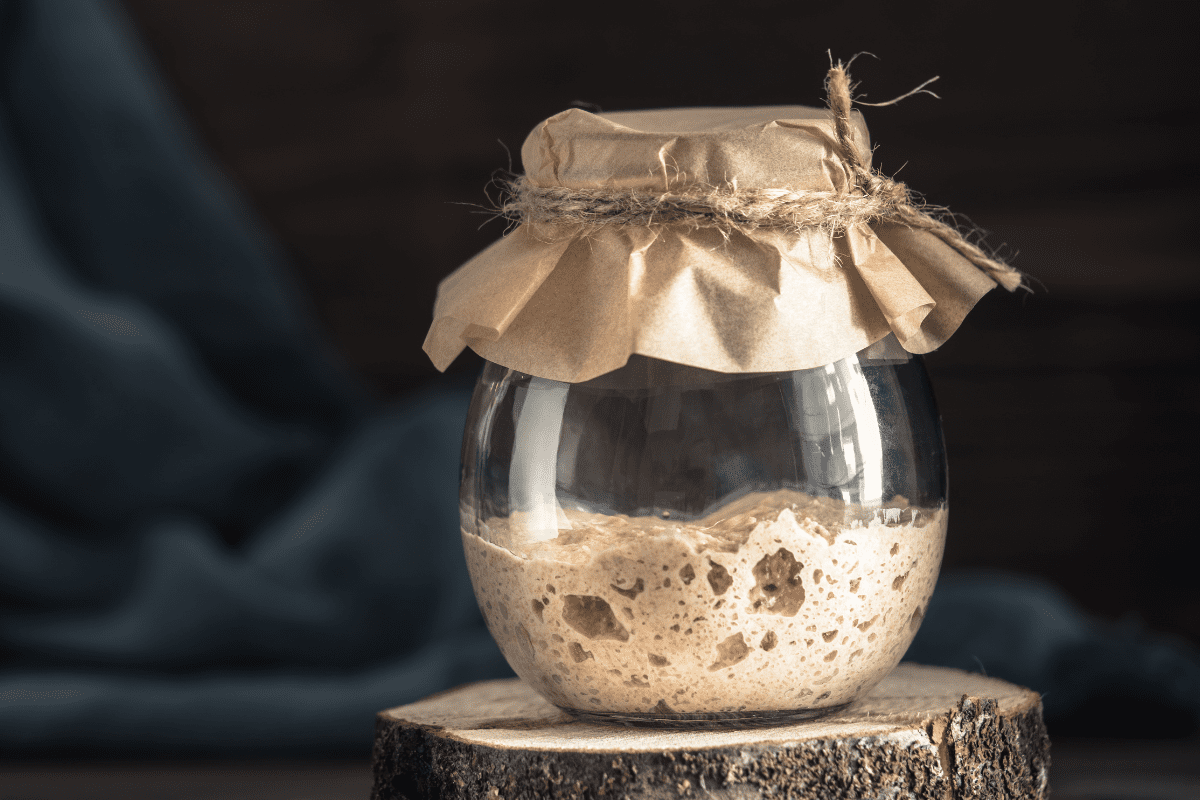
Easy Savory Sourdough Discard Crackers: The Best Zero-Waste Snack for Leftover Starter
These Savory Sourdough Discard Crackers are a perfect solution for using up leftover sourdough starter. They’re delightfully crisp, lightly tangy, and super easy to customize with your favorite seasonings. Enjoy them on their own, pair with cheese and charcuterie, or dip in hummus for a quick, waste-free treat!Print Share on Twitter Share on FacebookServings: 50 CrackersCalories: 150kcalEquipment
- Mixing bowl
- Wooden spoon or spatula
- Rolling Pin
- Baking sheets
- Parchment paper or silicone baking mat
- Sharp knife or pizza cutter
- Cooling rack
Ingredients
- 1 cup about 240 g sourdough discard (unfed starter)
- 1 cup 125 g all-purpose flour (plus extra for dusting)
- 2 tablespoons 30 g unsalted butter, softened (or use olive oil for a vegan option)
- ¼ teaspoon baking soda
- ½ teaspoon salt plus extra for sprinkling on top
- 1 tablespoon dried herbs or seasoning optional; e.g., rosemary, oregano, or Italian blend
- 2 tablespoons water optional, only if needed to bring dough together
- Tip: Adjust seasoning to taste. Experiment with garlic powder onion powder, sesame seeds, or chili flakes for extra flavor.
Instructions
- Combine the Wet Ingredients
- In a mixing bowl, stir together the sourdough discard and softened butter (or olive oil). Mix until well combined.
- Add Dry Ingredients
- Add the all-purpose flour, baking soda, and salt. If you’re using dried herbs or other seasonings, add them now. Mix until a dough starts to form.
- If the dough feels too dry, sprinkle in 1–2 tablespoons of water. If it feels too wet, add a little extra flour.
- Form the Dough
- Transfer the dough onto a lightly floured surface. Knead gently for 1–2 minutes until it’s smooth and not sticky. Avoid overworking the dough; you just want it to hold together.
- Roll Out the Dough
- Preheat your oven to 350°F (175°C).
- Place dough between two sheets of parchment paper or on a floured surface. Use a rolling pin to roll the dough to about 1/8-inch thickness (3 mm). The thinner, the crispier the crackers.
- Cut into Shapes
- Use a sharp knife or pizza cutter to slice the rolled dough into squares or rectangles. Alternatively, use cookie cutters for fun shapes.
- Carefully transfer the cut dough onto a baking sheet lined with parchment paper.
- Optionally, sprinkle a bit of salt or additional herbs on top for extra flavor.
- Bake
- Bake in the preheated oven for 15–20 minutes, or until the edges turn light golden brown. Keep an eye on them as they can over-brown quickly.
- Rotate the baking sheet halfway through to ensure even baking.
- Cool and Store
- Transfer crackers onto a cooling rack to let them cool completely. This helps them crisp up further.
- Store in an airtight container for up to 1 week. If they lose their crunch over time, pop them back in the oven for a few minutes to re-crisp.
Video
Nutrition
Serving: 8crackers | Calories: 150kcal | Carbohydrates: 22g | Protein: 3g | Fat: 5g | Saturated Fat: 2g | Sodium: 300mg | Fiber: 1g | Sugar: 1gShare on Facebook Share on TwitterNutrition Disclaimer
The Chef Marcy is not a dietician or nutritionist, and any nutritional information shared is an estimate. If calorie count and other nutritional values are important to you, we recommend running the ingredients through whichever online nutritional calculator you prefer. Calories can vary quite a bit depending on which brands were used.





